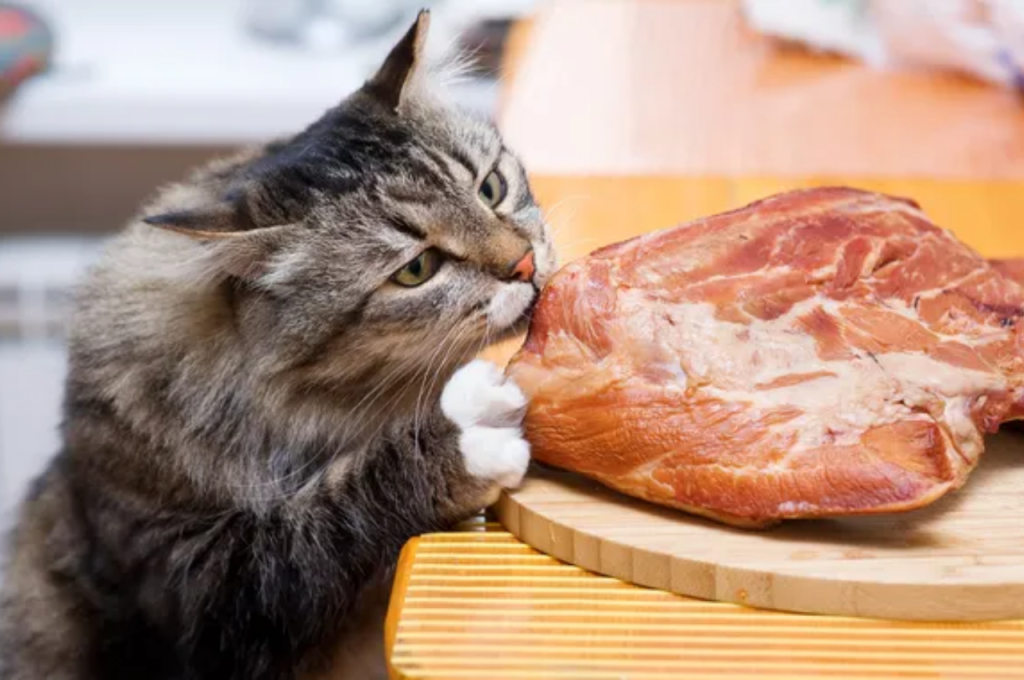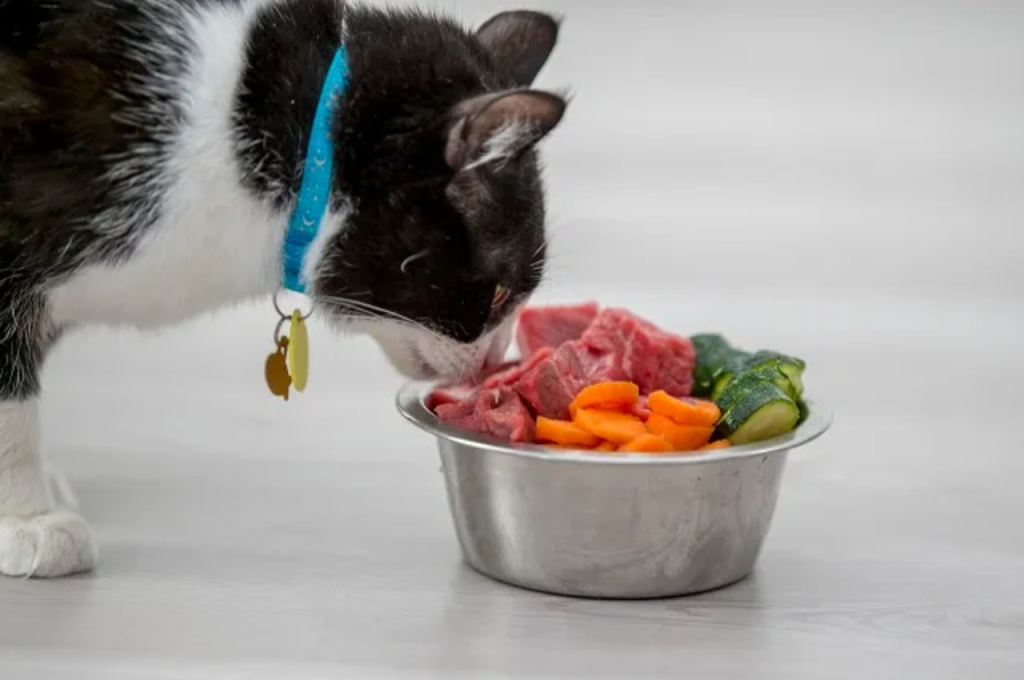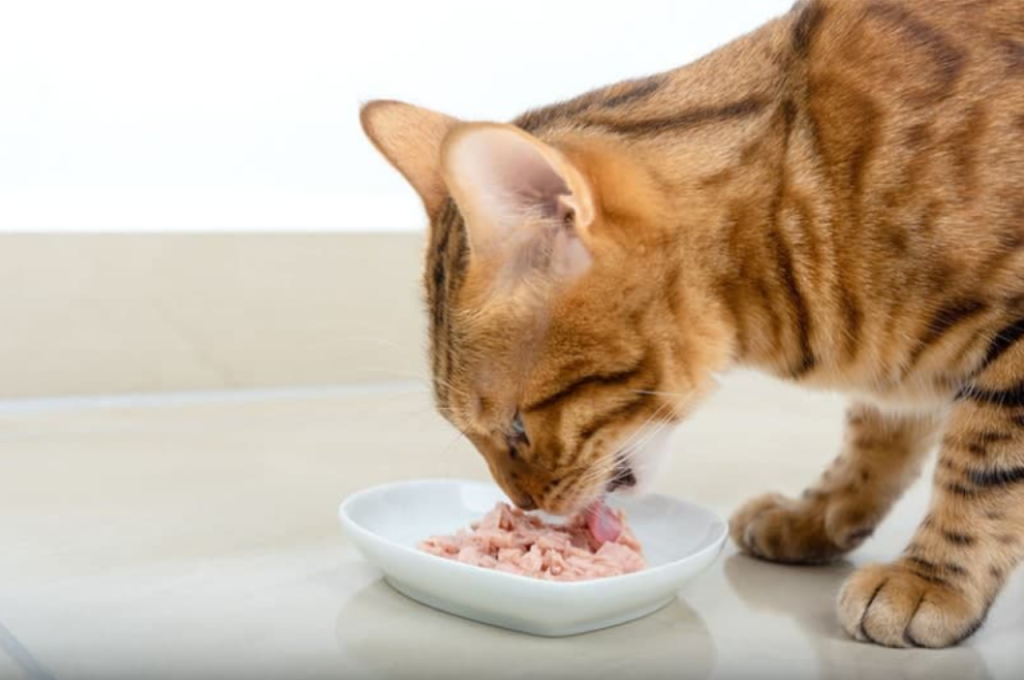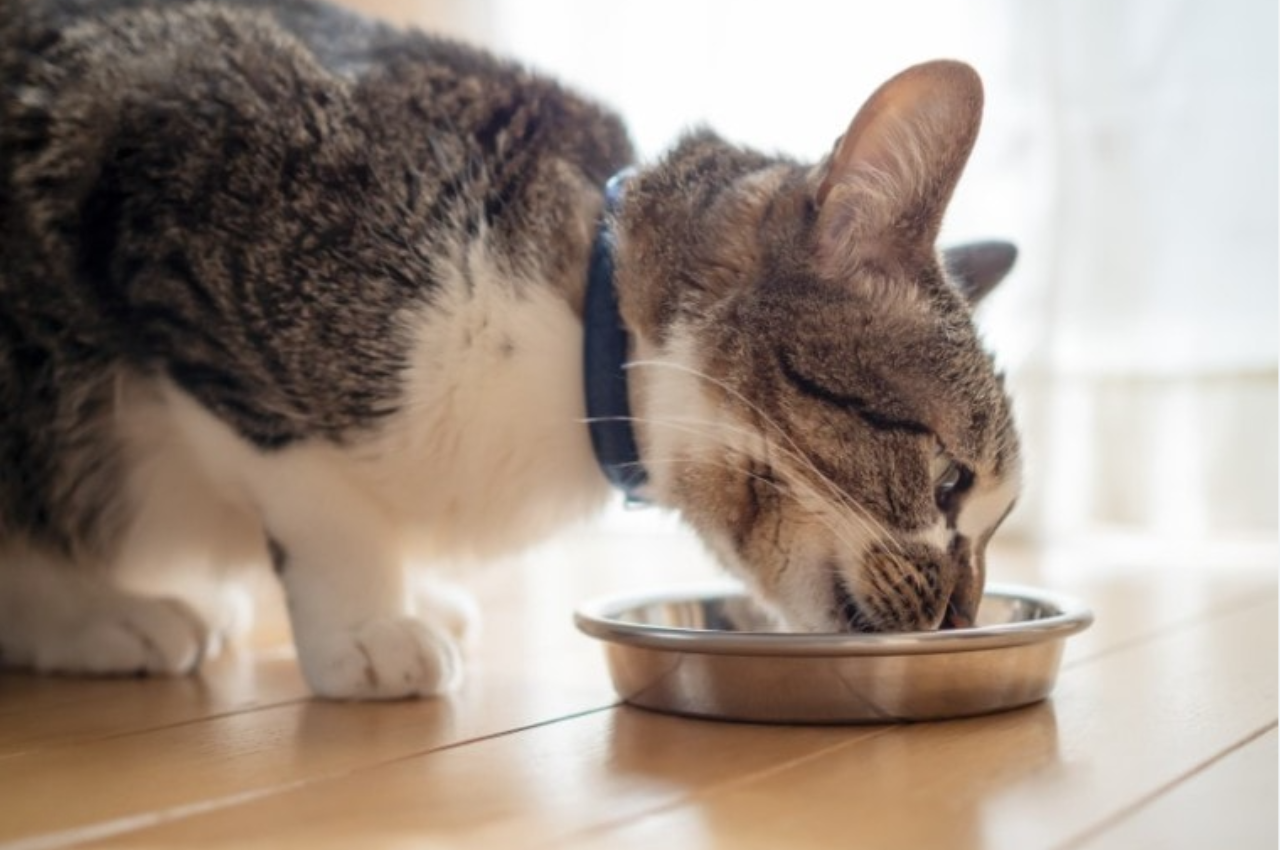Cats like the most foods that are rich in protein, such as meat, poultry, and fish. Cats are notoriously picky eaters, but there are certain foods that most felines tend to enjoy.
In the wild, cats are obligate carnivores, meaning their diet mainly consists of meat. This biological trait carries over into their domestic lives, where cats tend to favor foods high in protein, such as meat, poultry, and fish. Cats also have a sweet tooth, and many enjoy the taste of certain fruits like cantaloupe and pumpkin.
Additionally, some cats may enjoy the occasional taste of cheese or yogurt. It’s important to note that while these foods may be favorites, they should be given in moderation and always check with your veterinarian before introducing new items into your cat’s diet.
Understanding Your Cat’s Taste Preferences
Cats are known for their picky eating habits and discerning taste preferences. Understanding what foods cats like the most can help cat owners provide a balanced and satisfying diet for their feline companions. Unlocking the mystery of a cat’s palate involves delving into the science behind a cat’s sense of taste and exploring their natural dietary inclinations.

The Science Behind A Cat’s Sense of Taste
Cats have fewer taste buds than humans, which affects their perception of flavors. While they can detect sweetness, they are less responsive to it due to the genetic mutation that caused a loss of the sweet taste receptor. Instead, cats have a heightened sensitivity to savory, meaty flavors, making them obligate carnivores. Additionally, their sense of smell plays a significant role in how they perceive food, influencing their overall taste preferences.
An Exploration of Cats’ Natural Diet
To understand the foods that cats like the most, it’s crucial to consider their natural diet in the wild. Cats are carnivorous animals, and their diets primarily consist of high-protein prey such as rodents, birds, and small mammals. This means that they prefer foods with a high protein content, as well as those that provide essential nutrients found in animal-based sources. Recognizing this preference can guide cat owners in selecting appropriate foods that align with their pets’ natural inclinations.
Top Meats and Fish for Feline Foodies
Discover the protein-packed favorites that will have your feline foodies purring with delight. From succulent meats to flavorful fish, find out what foods cats love the most.
Protein is essential for our feline friends, and they especially love meats and fish. Irresistible options for your cat to enjoy are the following:
Irresistible Meats for Your Cat
When it comes to meats, cats have their preferences. Here are some top picks:
– Chicken: A favorite among many cats due to its taste and texture.
– Turkey: Another excellent source of lean protein that cats find delectable.
– Beef: Rich in nutrients, beef is a hearty meal choice for your feline friend.
– Lamb: Offers a unique flavor and is a protein-packed option for cats.
Delectable Fish that Cats Love
Cats are notorious for their love of fish. Here are some fish options your cat is sure to enjoy:
– Salmon: Known for its omega-3 fatty acids, salmon is a healthy and flavorful choice.
– Tuna: A popular choice among cats, tuna is a great source of protein.
– Whitefish: Cats enjoy the mild flavor of whitefish, making it a go-to option for many feline foodies.
Indulgent Snacks for Your Furry Friend
Just like humans, cats enjoy treats as a special indulgence. Offering your feline friend a tasty snack can be a great way to strengthen the bond between you and provide them with a little something extra to look forward to. However, it’s important to choose treats that are both delicious and nutritious. In this article, we’ll explore healthy snack options and homemade treats that will have your cat purring with delight.
Healthy Snack Options for Cats
When it comes to choosing healthy snacks for your cat, it’s important to focus on ingredients that provide both taste and nutritional value. Here are some options:
- Salmon: This fish is not only delicious to cats but also provides essential omega-3 fatty acids that promote a healthy coat and skin.
- Chicken: Cooked, boneless chicken is a great protein-rich option for your feline friend. Just be sure to remove any seasoning or added salt.
- Baby Carrots: These crunchy treats are not only low in calories but also help promote good dental health in cats.
Homemade Treats That Will Have Your Cat Purring
If you enjoy getting creative in the kitchen, why not try making some homemade treats for your cat? Not only will it allow you to control the ingredients, but it can also be a fun bonding activity. Here are a few recipes to try:
Tuna and Catnip Crunchies
To make these delicious crunchy treats, you’ll need:
- 1 can of tuna
- 1 cup of whole wheat flour
- 1 tablespoon of catnip
- 1 beaten egg
Preheat your oven to 350°F (175°C) and mix all the ingredients in a bowl. Roll the dough into small balls and place them on a baking sheet. Bake for 15 minutes or until golden brown. Let them cool before serving them to your cat!
Pumpkin and Chicken Bites
If your cat enjoys the taste of pumpkin, these treats are sure to be a hit:
- 1/2 cup of canned pumpkin puree
- 1/2 cup of cooked and shredded chicken
- 1/4 cup of oat flour
- 1 beaten egg
Mix all the ingredients in a bowl until well combined. Shape the mixture into small bite-sized balls and place them on a baking sheet. Bake at 350°F (175°C) for 10-15 minutes or until firm. Allow them to cool before serving to your cat.
These wholesome and indulgent treats are perfect for pampering your cat while keeping their health in mind. Remember, moderation is key when offering treats to your furry friend. So go ahead and spoil them a little with these delicious options!
Surprising Vegetables and Fruits That Cats Enjoy
When it comes to feeding our feline friends, it’s important to provide them with a balanced diet that meets their nutritional needs. While cats are obligate carnivores, meaning they primarily thrive on meat, they can also enjoy certain plant-based options. Surprisingly, there are vegetables and fruits that cats not only tolerate but enjoy. Let’s explore some unexpected fruits and nutritious vegetables that can please your cat.

Unexpected Fruits that Cats May Love
Believe it or not, some cats have a sweet tooth and can be enticed by certain fruits. Before introducing fruits to your cat’s diet, it’s important to remember that these should only be served as occasional treats and in small quantities.
- Bananas: Cats may adore the creamy texture and mildly sweet taste of bananas. However, due to their high sugar content, it’s best to offer small pieces sparingly.
- Blueberries: These tiny, antioxidant-rich fruits can serve as a healthy snack for your cat. Plus, their size makes them perfect for playful batting around.
- Watermelon: The juicy and refreshing nature of watermelon can be a delightful surprise for your cat. Just be sure to remove the seeds and serve it in moderation.
Nutritious Vegetables that Can Please Your Cat
Vegetables are an excellent source of fiber, vitamins, and minerals, and can be valuable additions to your cat’s diet. However, it’s crucial to remember that cats have unique dietary requirements and may not appreciate all vegetables. Here are some nutritious options that your cat may enjoy:
- Pumpkin: This fibrous vegetable is not only tasty but can also aid in digestion and promote healthy bowel movements for your cat. Serve it cooked and mashed.
- Peas: Cats can find peas enjoyable, especially when they are soft and mashed. These tiny green gems also provide a good source of dietary fiber.
- Cucumbers: With their refreshing crunch, cucumbers can be a hydrating and low-calorie snack for cats. Peel and slice them into bite-sized pieces for easy chewing.
Understanding and Encouraging Picky Eating Habits
Looking for cat-friendly foods? Discover what foods cats enjoy the most and encourage their eating habits with our guide on understanding and catering to finicky eaters.
Understanding and encouraging picky eating habits cats can be notorious for their selective eating habits. Understanding and encouraging a finicky cat’s eating behaviors can be crucial for their overall health and nutrition. Identifying and Addressing Picky Eating Behavior. Recognizing signs of picky eating in cats can help in addressing their dietary preferences. Observing their reactions to different foods can provide insights into what they enjoy. Consistency in offering various options is key to tackling picky behavior. Strategies to encourage diverse eating habits.
1. Introduce new foods gradually to expand their palate.
2. Mix favorite foods with new options for a smoother transition.
3. Rotate flavors and textures to keep mealtime interesting.
4. Consult with a vet for personalized dietary recommendations tailored to your cat’s needs.
Catering to Changing Palates in Older Felines
As cats age, their tastes and nutritional needs can change. Pet owners need to understand how to cater to the changing palates of older felines to ensure their continued health and happiness. In this article, we’ll explore how to adjust the diet for aging cats and the most senior-friendly food choices.
Adjusting Diet for Aging Cats
Senior cats may experience a decrease in their sense of smell and taste, which can affect their willingness to eat certain foods. Additionally, their metabolism and digestion may become less efficient, requiring adjustments to their diet.
- Gradually introduce new foods to allow for acceptance and avoid digestive upset.
- Incorporate more moisture-rich foods to support hydration and kidney function.
- Monitor calorie intake to prevent weight gain or loss, depending on individual needs.
Senior-friendly Food Choices
When selecting food for senior cats, it’s important to prioritize high-quality, easily digestible options. Look for specially formulated senior cat food products that address the specific nutritional requirements of aging felines. These may include:
- Foods enriched with joint-supporting nutrients such as glucosamine and chondroitin for mobility.
- Low-calorie, high-protein diets to maintain muscle mass and prevent obesity.
- Soft, moist textures for cats with dental issues or decreased appetite.
Navigating Dietary Restrictions in Cats
Cats, just like humans, can have dietary restrictions and allergies. When navigating the dietary needs of your feline friend, it’s important to understand the common food allergies and intolerances they may experience. By being mindful of these restrictions, you can ensure that your cat’s diet is suitable and safe. Here’s a deeper look into some common food allergies in cats and how to manage and adapt to their dietary intolerances.
Common Food Allergies in Cats
When it comes to cats, some of the most common food allergies include fish, beef, dairy, and eggs. These proteins can trigger allergic reactions in cats, leading to symptoms such as vomiting, diarrhea, itching, and skin rashes. It’s crucial to carefully monitor your cat’s response to different food ingredients and consult with a veterinarian if you suspect any allergy symptoms. Identifying and avoiding these allergens is essential in ensuring your cat’s well-being.
Managing and Adapting to Dietary Intolerances
If your cat develops a dietary intolerance, it’s important to carefully manage their diet to alleviate any discomfort or health issues. This may involve eliminating specific ingredients, such as grains or certain proteins from their diet. Gradually transitioning to a hypoallergenic or limited ingredient diet, under the guidance of your veterinarian, can help in managing your cat’s intolerances and promoting better digestive health.
Creating A Bond Through Food with Your Beloved Cat
Do you want to deepen the bond with your feline friend through food? Let’s explore how you can build a stronger connection with your beloved cat through the joy of sharing meals.
Nurturing The Human-feline Bond Through Feeding
Sharing food with your cat is a special way to strengthen your bond. Cats are known for their love of specific foods, and understanding their preferences can enhance this unique relationship.

Tips For A Rewarding Mealtime Experience
- Serve a mix of wet and dry food for nutritional balance.
- Offer a variety of flavors to cater to your cat’s preferences.
- Create a calm and quiet environment during mealtimes.
Creating A Bond Through Food
| Food | Cat’s Reaction |
| Tuna | Excited purring and meowing |
| Chicken | Eager eating and gentle head nudges |
| Salmon | Content and relaxed body language |
Remember, feeding your cat goes beyond just providing nourishment. It’s a way to communicate love and care, strengthening the bond between you and your furry companion.
Frequently Asked Questions
Certainly! Here are some questions about what foods cats like the most:
1. What are some foods that cats like the most?
Cats typically enjoy foods such as tuna, chicken, and liver. These protein-rich foods are appealing to their carnivorous nature and provide essential nutrients for their health and well-being.
2. Can cats eat fruits and vegetables?
While cats are obligate carnivores, some may enjoy small amounts of fruits and vegetables like berries or cooked carrots as treats. It’s important to consult with a veterinarian before introducing new foods to ensure they are safe for your feline friend.
3. Do cats like wet or dry food better?
Cats generally prefer wet food due to its higher moisture content and more enticing aroma. However, some cats may have a preference for dry kibble. It’s essential to provide a balanced diet based on your cat’s individual needs and preferences.
Conclusion
Understanding your cat’s food preferences is key. Experiment with different flavors and textures to keep them happy and healthy. Remember to prioritize quality nutrition and vary your diet to ensure a well-rounded feline dining experience. Your cat’s happiness starts with their favorite foods.
